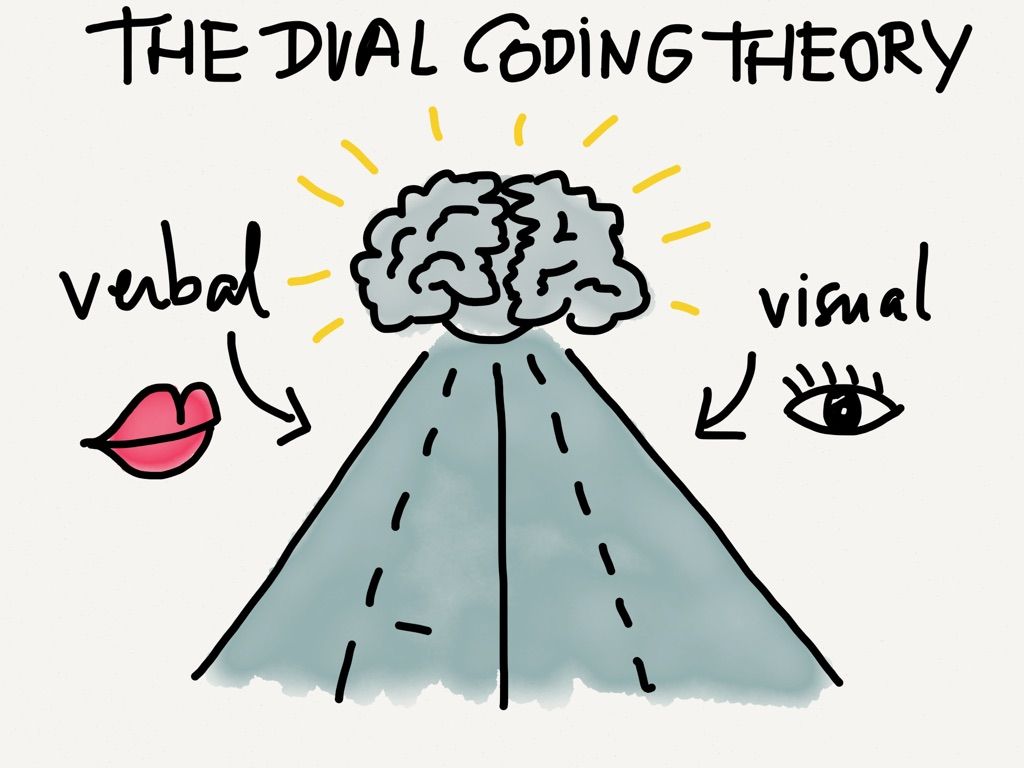DUAL CODING THEORY
Pavio (1971) discovered that our memory had two channels to store visual and verbal stimuli. The fact that they are linked helped students’ cognitive load reduced and their working memory capacity increased; therefore, learning is improved.
I was surprised that what has worked significantly to me was theorized as Dual coding theory. When I was at high school, to learn an eye structure, I used chalk and draw an eye on ground. I kept saying out loud all its components and layers while drawing them. It really help me to memorize all details. I also felt comfortable when using diagrams or graphic organizers to learn some things new. Recently, in my Research Method course, I have used graphic organizers to learn research paradigms in terms of ontological. epistemological, and methodological perspectives. To me, learning these ideas verbally would have been a great challenge if I had not drawn it down.
In anticipated teaching context, I will definitely go for this theory. In my opinion, visual representation helps drawing students attention and facilitate their memorization. Thus, they will not easily to give up with a “wall of text” as visual things reduces their work load effectively.

References:
Caviglioli, O. (2019, July 10). Dual coding theory: The complete guide for teachers. Retrieved from https://teacherofsci.com/dual-coding-theory/
Stanford Encyclopedia of Philosophy. (2014). Dual Coding and common coding theories of memory. Retrieved from https://plato.stanford.edu/entries/mental-imagery/theories-memory.html
InstructionalDesign.org. (2020). Dual Coding theory (Allan Paivio). Retrieved from https://www.instructionaldesign.org/theories/dual-coding/
4pt Limited. (2014, November 7). Illustration & E-learning (Dual-coding Theory) [Video file]. Retrieved from https://www.youtube.com/watch?v=h9Fuhds6MTU
The Learning Agency. (2019, October 9). Dual Coding| Making visuals work| Science of Learning Series [Video file]. Retrieved from https://www.youtube.com/watch?v=WV5DAY0JmLA


Hello Kate,
Hope all is well with you. Yes like you, I was amazed to know that the method that I used with my students previously and that my teachers are using while teaching me is referred to as Dual Coding theory. “New learning”. Dual Coding works better with all age groups specifically with primary and elementary school students. It makes learning not only interesting but with this, it is easy to comprehend and associate what is said and explained to us. Thanks for sharing the beautiful example of the eye diagram. Making mind maps, flow charts, visual descriptions while learning makes things easy to learn. Completing the whole syllabus in time is always an urgent priority for most of the teachers. In this dual coding theory can be very handy. Thus integrating visuals with verbal lessons can be done significantly.
Take care.
Hi Kate,
Thank you very much for sharing your experience in high school. I think your example is very effective in showing that Dual coding theory is very effective in teaching. Is visual and verbal stimulation really helpful to our study? Quickly and effectively remember what we saw.
take care
Jasmine